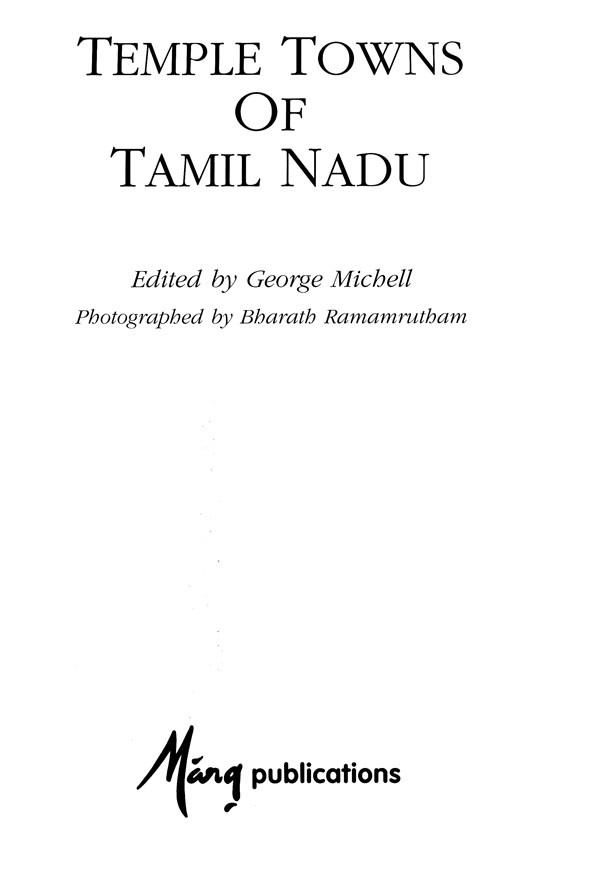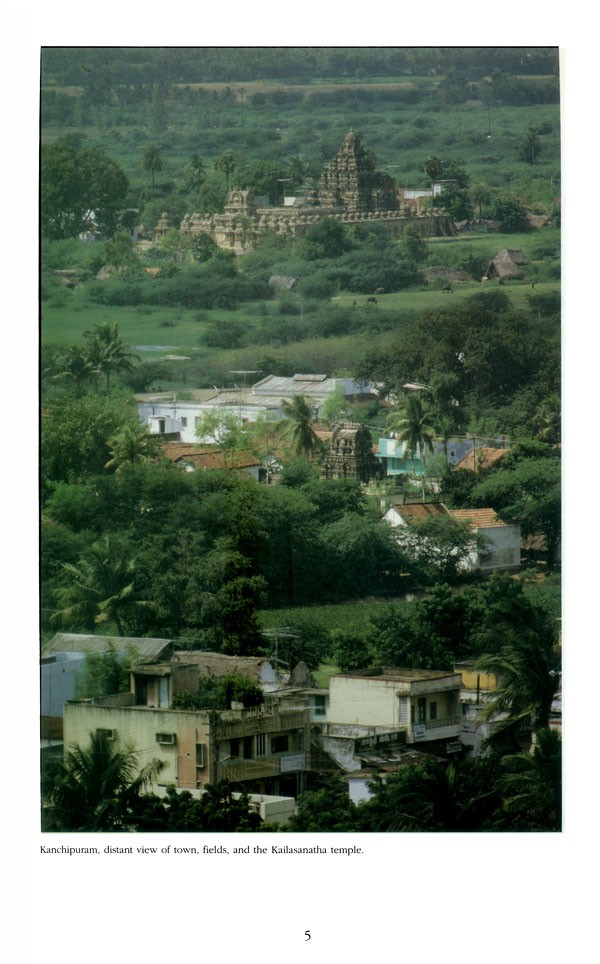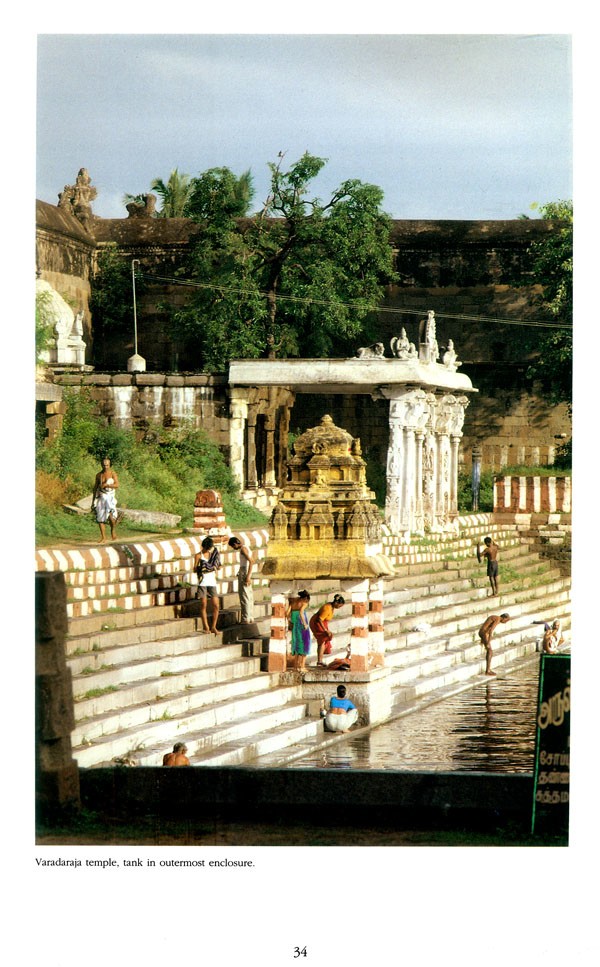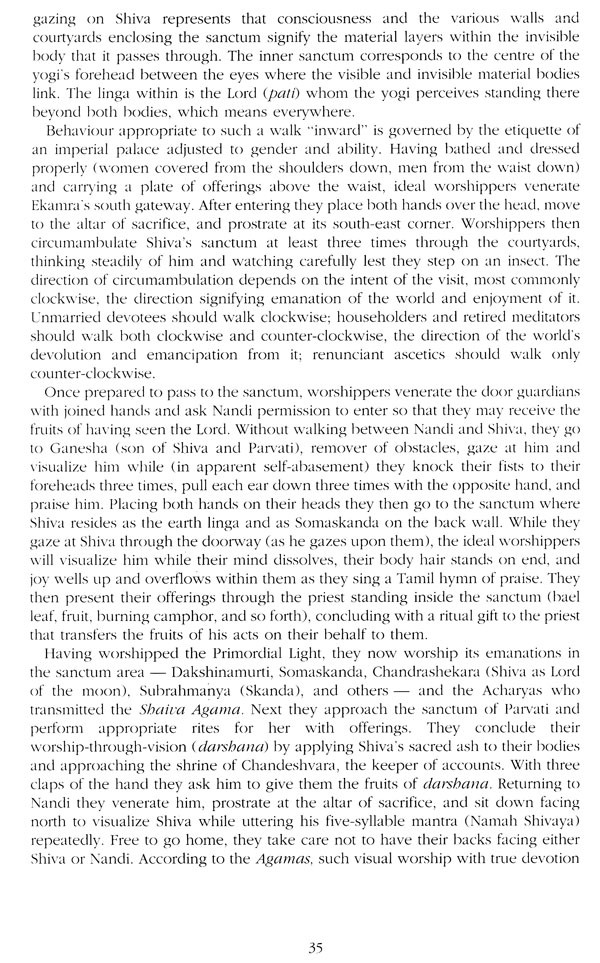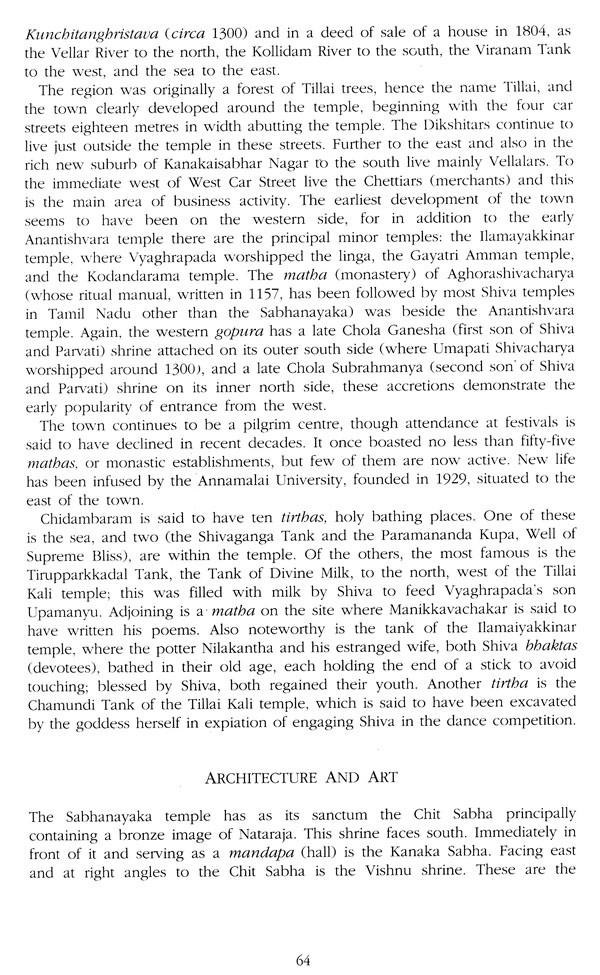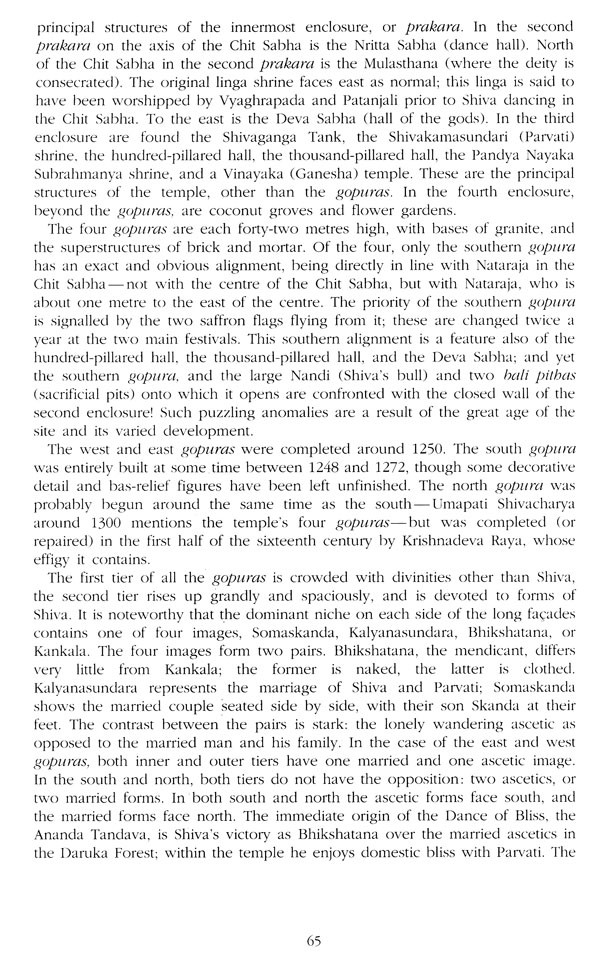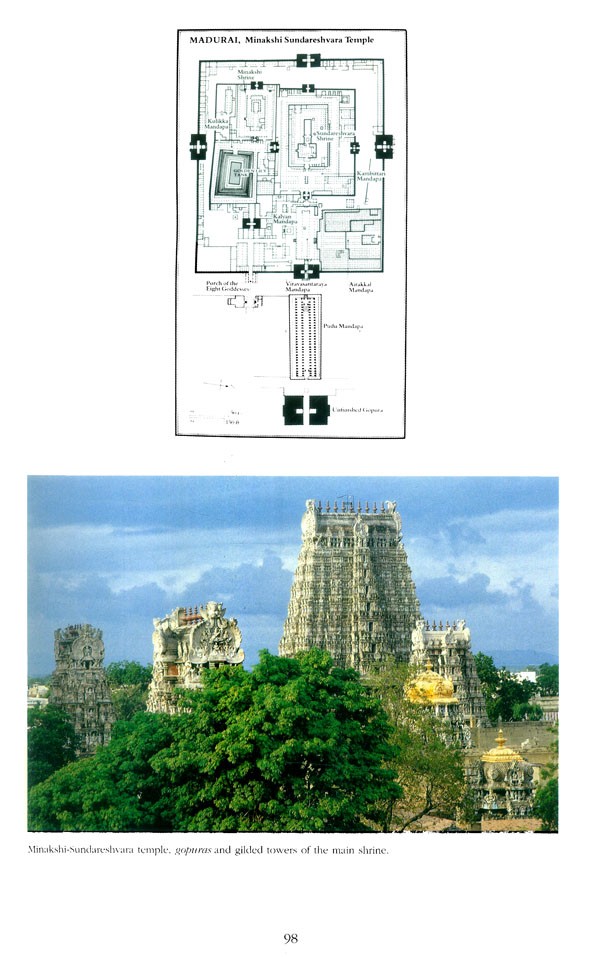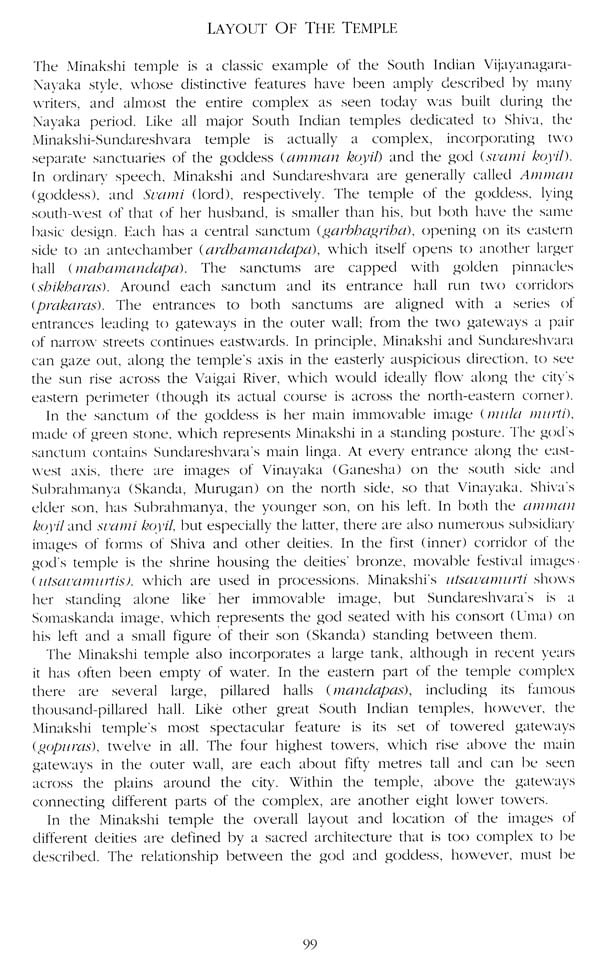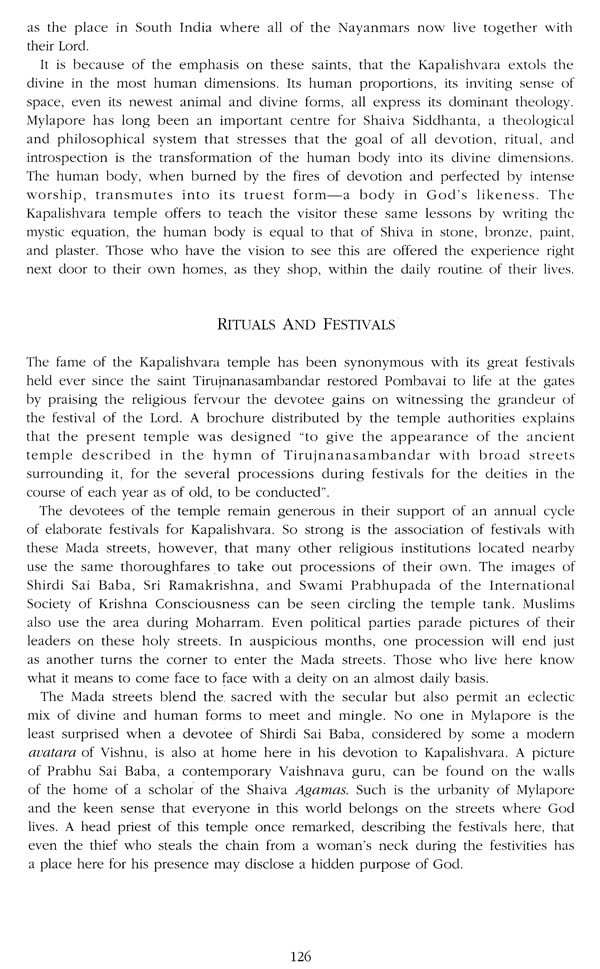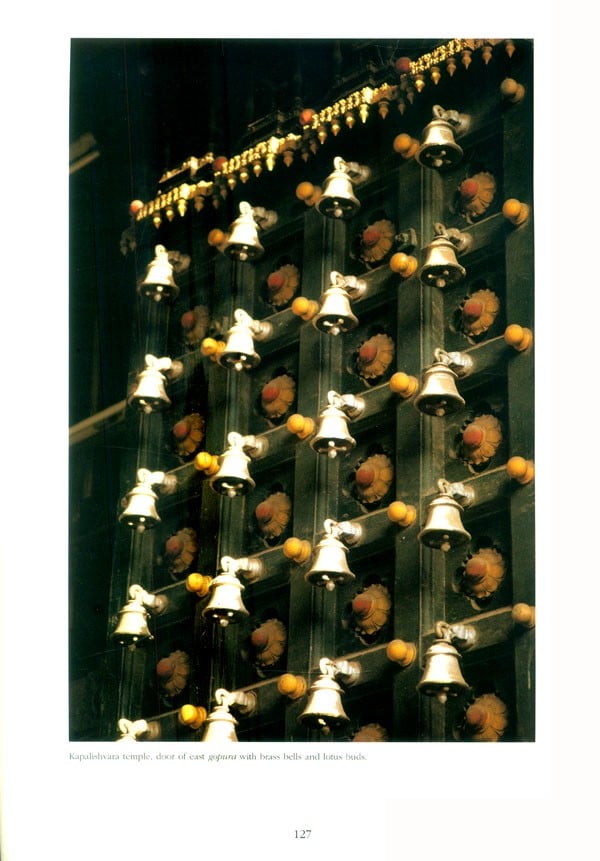About the Book This issue of Marg attempts to bridge the gap between art history and religious history by placing some of the greatest monuments of Tamil Nadu within an appropriate religious and ritualistic context. The interaction of sacred and urban space is the underlying theme of the volume, and this is explored at a select number of key sites throughout the state. The temples chosen are those at Kanchipuram, Tiruvannamalai, Chidambaram, Srirangam, Madurai, and Mylapore (Madras). Each chapter aims at not merely giving the history of the monument and the layout of its architecture, but also describing the way in which the monument is a constant presence in the lives of the local populace. The writers represent a wide spectrum of approaches and several demonstrate a concern to understand the workings of the temple within a particular mythological framework: Dennis Hudson describes the myth of Kamakshi worshipping the earthlinga beneath the mango- tree as central to the main trio of shrines at Kanchipuram; David Smith emphasizes the legend of the dance of Shiva as crucial to any understanding of the Chidambaram sanctuary; C.J. Fuller reveals that the marriage of Minakshi to Sundareshvara, together with Vishnu's cooperation, underlines all aspects of the ceremonies at Madurai. Other contributors stress the impact of the natural setting of the temple: Françoise L'Hernault demonstrates the relationship of the Arunachaleshvara temple at Tiruvannamalai to the rocky hill that overshadows it, and which in itself is an object of worship; Paul Younger shows how Srirangam Island in the Kaveri shares much of its sanctity with the Ranganatha shrine which is located there. Nor is the relationship between the religious and commercial life of temple towns neglected: Joanne Punzo Waghorne points out the affinity between the Kapalishvara shrine at Mylapore and the markets and shops which crowd around its outer walls.
Jacket Madras, Mylapore, and Kapalishvara temple at night.
Endpapers Kanchipuram, Varadaraja temple, painted Vaishnava emblem, or namam, on the inner enclosure wall of the temple.
About the Author GEORGE MICHELL is an architectural historian who for many years has specialized in the art traditions of South India? Since 1980 he has worked at Vijayanagara, and is co-director of the Vijayanagara Research Project. He has edited several issues for Marg, His recently published books are Mughal Style, Mumbai, 2007 and John Burton-Page's Indo-Islamic Architecture (edited), Leiden, 2007.
Preface Tamil Nadu preserves virtually intact a remarkable and vigorous religious tradition. Myths and rituals continue to dominate the everyday lives of almost the entire population, dictating the daily, weekly, and annual calendars of shrines, towns, and cities, and inspiring major building projects and works of art. While this issue of Marg acknowledges the genius of South Indian architecture, sculpture, and painting, the chapters look beyond the monuments to focus on the interaction between sacred space and urban space that is such a prominent feature of Tamil Nadu's temple towns. The studies concentrate on a select number of examples - Kanchipuram, Tiruvannamalai, Chidambaram, Srirangam, Madurai, and Mylapore (Madras) - each of which is examined in terms of its broader mythological and ritualistic context. Taking an approach that derives more from religious studies than from art history, the writers contribute towards a better understanding of the enduring purpose of the architecture, sculpture, and painting by locating these arts within a still living, urban religious tradition. The editor wishes to thank the six writers who so generously agreed to contribute to this volume at unreasonably short notice, offering the results of their many combined years of research. The photographer wishes to thank Shri B, Sundaresan Iyer, Commissioner, and Shri Swaminathan, Deputy Commissioner, Hindu Religious and Charitable Endowments, Madras, for arranging permissions to work at the various temples. Suneet Divecha proved to be both an efficient assistant and delightful travelling companion. As ever, the staff of Marg has made every effort to publish a volume of the highest standards. Without the gracious co-operation of all these individuals, this volume would not have been possible. This volume was originally dedicated to Douglas Barrett (1917-1992), the eminent scholar of Indian art. He was associated for much of his career with the Department of Oriental Antiquities at the British Museum, where he systematically built up the Indian collection. In the years that have passed since the first printing, we have had the sad news of the untimely death of Françoise L'Herault (1937-1999), author of the article on Tiruvannamalai. We would like to dedicate this reprint to her memory. Not only was she a welcoming friend to all scholars visiting the Ecole Francaise d'Extreme Orient in Pondicherry where she worked for some thirty-five years, she was also one of the greatest experts on the architecture and art of Tamil Nadu. Her publications include Darasuram (Paris, 1987) and two volumes in the series Tiruvannamalai: Un Lieu Saint Saivite du Sud de l'Inde (Pondicherry, 1991).
**Contents and Sample Pages**
